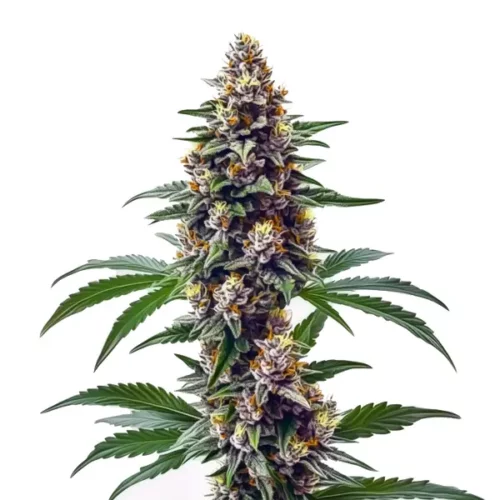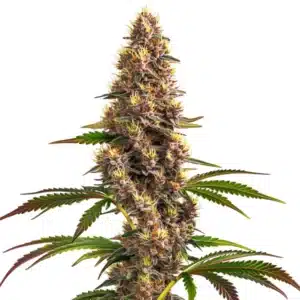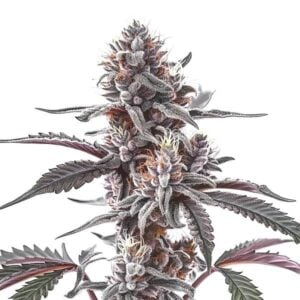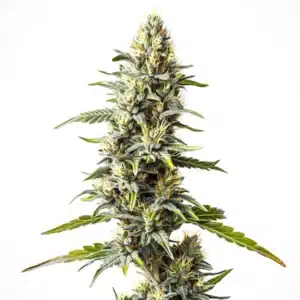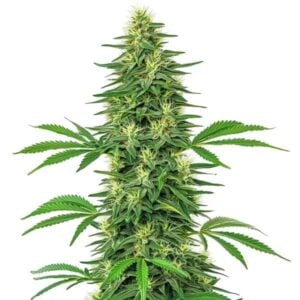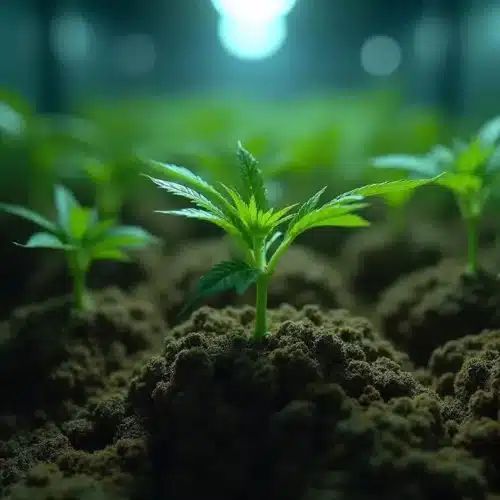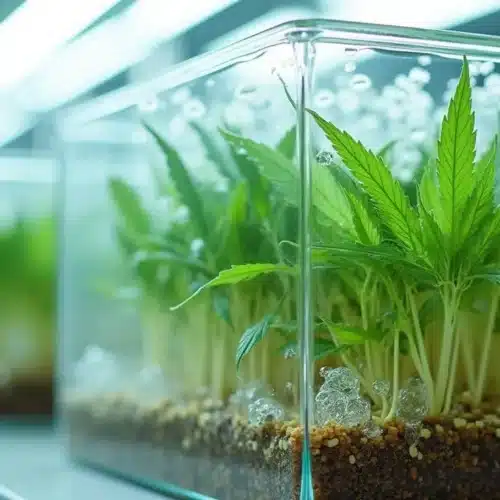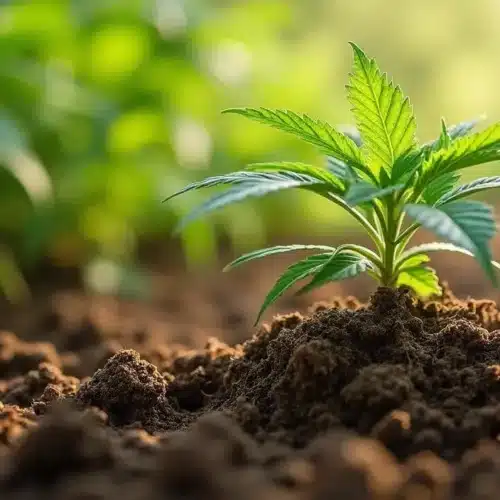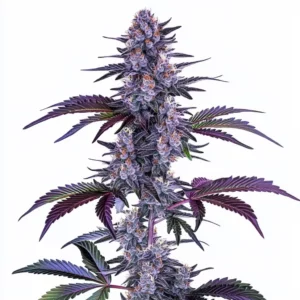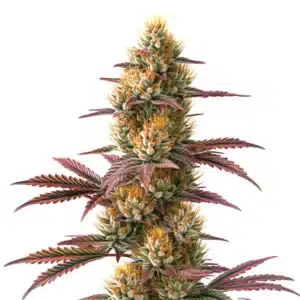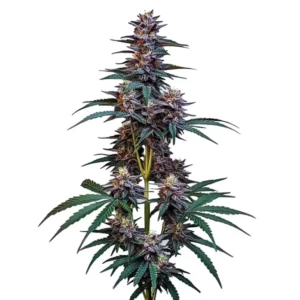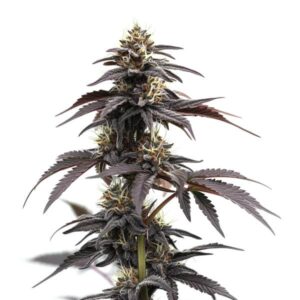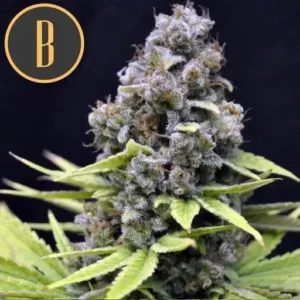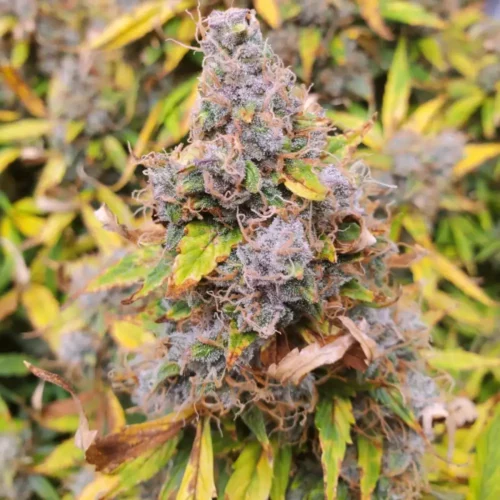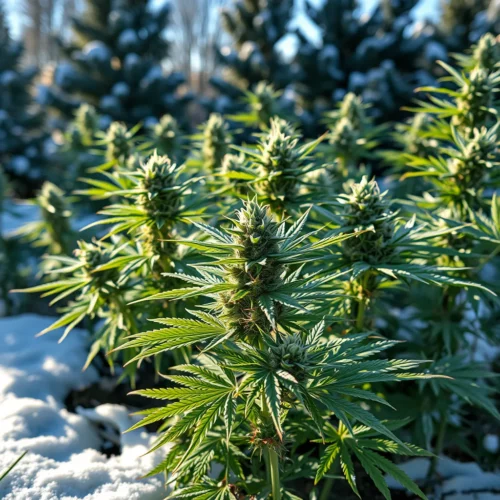Blueberry Autoflower Strain Cannabis Seed Description
The Blueberry Autoflower Strain is a highly sought-after cannabis strain known for its unique combination of aroma, flavor, and effects. This strain is an autoflowering variety, making it ideal for both novice and experienced growers. Blueberry Autoflower is a hybrid strain with a harmonious blend of Indica and Sativa genetics.
One of the distinguishing features of the Blueberry Autoflower is its distinct blueberry aroma and flavor profile. It delivers a sweet and fruity taste with hints of blueberries and berries. The aroma is equally captivating, making it a favorite among cannabis enthusiasts.
Recommended Strains
Blueberry Autoflower
 THC: 17% - 23%
THC: 17% - 23% Type of seed: Autoflowering
Type of seed: Autoflowering Phenotype: Mostly Indica
Phenotype: Mostly Indica Day to flower: 8 - 10 weeks
Day to flower: 8 - 10 weeks
Blueberry Regular
 THC: 22% - 24%
THC: 22% - 24% Type of seed: Regular
Type of seed: Regular Phenotype: Mostly Indica
Phenotype: Mostly Indica Day to flower: 7 - 9 weeks
Day to flower: 7 - 9 weeks
The Blueberry Auto plant typically grows to a moderate height, making it suitable for indoor and outdoor cultivation. It produces compact, resinous buds that are covered in a thick layer of trichomes, ensuring a potent and satisfying experience for users.
Promos & Deals
Environmental Requirements for Growing Marijuana Blueberry Autoflower
To achieve a successful cultivation of Blueberry Autoflower Strain, it’s essential to provide the optimal environmental conditions. Here are the key requirements:
The Blueberry Autoflower thrives in a temperate climate, with temperatures ranging between 70-80°F (21-27°C) during the day and slightly cooler temperatures at night. Maintaining a stable temperature and humidity level within the grow space is crucial to prevent stress and potential issues like mold or mildew.
For indoor cultivation, high-quality LED grow lights or HPS lamps are recommended to ensure proper photosynthesis and robust bud development. During the vegetative phase, provide a light cycle of 18-20 hours of light per day, and switch to 12 hours of light and 12 hours of uninterrupted darkness to initiate flowering.
For outdoor cultivation, select a location with ample sunlight and a favorable climate. Blueberry Auto thrives in a sunny and warm environment, allowing it to reach its full potential. If you live in a region with cooler climates, consider using a greenhouse or providing additional protection to extend the growing season and safeguard your plants from adverse weather conditions.
Setting Up The Growing Cannabis Space
Prior to beginning your Blueberry Autoflower Strain cultivation, it’s essential to establish an efficient and well-organized growing space. Whether you choose indoor or outdoor cultivation, consider the following factors:
Indoor Cannabis Cultivation
For indoor growers, selecting the right grow tent or dedicated grow room is crucial. Ensure that the space provides sufficient room for the plants to grow vertically and has proper ventilation to maintain a fresh airflow. Install an efficient exhaust system with a carbon filter to control odors and prevent the accumulation of heat or humidity. Use reflective materials or Mylar sheets to maximize light distribution and avoid light leaks that could disrupt the flowering phase.
Choose a suitable growing medium for Blueberry Autoflower , such as high-quality soil or a hydroponic system, depending on your preferences and experience. Ensure proper drainage to prevent waterlogging and maintain a balanced pH level of around 6.0-6.5 for optimal nutrient absorption.
Outdoor Cannabis Cultivation
When cultivating Blueberry Autoflower Yield outdoors, select a location with plenty of sunlight and suitable soil conditions. Ensure the soil is well-draining and rich in organic matter. Consider using large containers or fabric pots to have better control over soil quality and root health. Additionally, protect your plants from strong winds by placing them near a fence or using windbreaks.
Using stakes or trellises to support the branches of your Blueberry Autoflower Strain plants is recommended. This helps prevent the branches from bending or breaking under the weight of the dense buds and promotes better airflow.
Propagation and Germination of Marijuana Seeds Blueberry Autoflower
Successful germination and propagation are essential for healthy and vigorous Blueberry Auto plants. Follow these steps to ensure a high germination rate and successful propagation:
- Start by selecting high-quality Blueberry Autoflower seeds from a reputable seed bank. This ensures genetic stability and the feminization of your plants.
- Begin the germination process by soaking the seeds in distilled water or a damp paper towel for 24-48 hours. Maintain a temperature between 70-85°F (21-29°C) and provide a dark and undisturbed environment.
- After the seeds have soaked and developed taproots, transfer them carefully to a pre-moistened growing medium, such as a seedling tray or small pots filled with a light and well-draining soil mix.
- Place the seeds in a warm and humid environment with gentle airflow. Maintain a temperature around 75-80°F (24-27°C) and a humidity level of 60-70% for optimal germination.
- Provide indirect light to the seedlings during the first few days, gradually increasing the light intensity as they develop. Avoid exposing them to intense light or heat that could cause stress or damage.
- Once the seedlings have developed a few sets of true leaves, they are ready to be transplanted into larger pots or the final growing containers.
By following these germination and propagation steps, you can ensure a successful start for your Blueberry Auto plants and establish a strong foundation for healthy growth and abundant yields. If you want to know how to grow other weed seeds go to the article how to grow Purple Haze Autoflower.
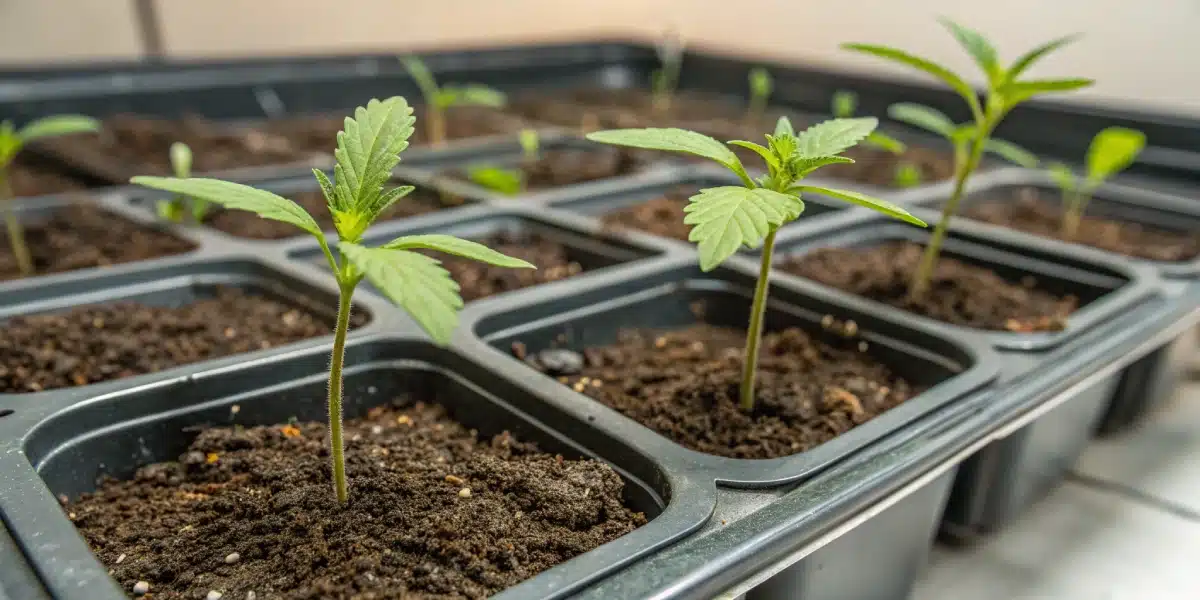
Vegetative Phase of Cannabis seeds Blueberry Autoflower Strain
The vegetative phase is a critical stage in the development of your Blueberry Autoflower Strain plants. Here are some key considerations during this phase:
Lighting: Provide your Blueberry Autoflower plants with 18-20 hours of light per day to promote vigorous vegetative growth. High-quality LED grow lights or HPS lamps are recommended to ensure sufficient light intensity and spectral distribution.
Nutrition: During the vegetative phase, your Blueberry Auto plants require a balanced and nutrient-rich diet. Use a reputable cannabis fertilizer with a higher nitrogen (N) content to encourage healthy leaf and stem growth. Follow the manufacturer’s instructions and monitor the plants for any signs of nutrient deficiencies or excesses.
Watering: Water your plants when the top inch of the soil feels dry. Avoid overwatering, as it can lead to root rot and other moisture-related issues. Allow the soil to dry out slightly between watering sessions, but ensure the plants do not experience extreme drought.
Training: Consider employing training techniques such as low-stress training (LST) or topping to control the height and shape of your Blueberry Autoflower Strain plants. These methods help create an even canopy, increase light penetration, and promote better bud development.
Pruning: Remove any lower branches or leaves that receive little light or show signs of disease or pests. This helps improve airflow and reduces the risk of mold or mildew formation.
By providing your Blueberry Autoflower plants with the right environmental conditions, nutrition, and care during the vegetative phase, you can establish healthy and robust plants ready for the flowering stage.
Flowering Phase of Marijuana Blueberry Auto Seeds
The flowering phase is the most anticipated stage of growing Blueberry Autoflower Strain, as it is when the plants develop their characteristic buds. To better understand this process, it’s helpful to track the development of blueberry autoflower week by week. Here’s what you need to know:
Lighting: Adjust the light cycle to 12 hours of light and 12 hours of uninterrupted darkness to initiate the flowering phase. Use a timer to maintain a consistent light schedule. During this stage, your Blueberry Autoflower plants require intense light, so ensure your grow lights provide adequate coverage and maintain the appropriate distance from the canopy.
Nutrition: Transition from a nutrient formula higher in nitrogen to a bloom or flowering-specific nutrient formula. These formulations are generally higher in phosphorus (P) and potassium (K), which promote bud development and overall flowering performance. Monitor the plants closely and adjust nutrient levels as needed to avoid deficiencies or toxicities.
Temperature and Humidity: Maintain a slightly lower temperature during the flowering phase, ideally around 65-75°F (18-24°C), to encourage resin production and prevent heat-related stress. As for humidity, aim for levels around 40-50% to minimize the risk of mold or bud rot.
Support: As your Blueberry Auto plants enter the flowering phase, the weight of the developing buds may cause branches to bend or break. Provide adequate support using stakes or trellises to ensure the plants can bear the weight and avoid bud damage.
Flowering Time: Blueberry Auto Strain typically has a flowering time of 8-10 weeks, but this can vary depending on the specific phenotype and environmental conditions. Monitor the trichome development using a magnifying tool to determine the optimal harvest window.
Throughout the flowering phase, maintain a vigilant eye for any signs of pests or diseases. Implement proper pest management practices and take immediate action at the first sight of infestation or abnormalities.
Cannabis Fertilization and Nutrition
Proper nutrition and fertilization are crucial for maximizing the growth, yield, and overall health of your blueberry autoflower strain. Consider the following tips:
Choosing the Right Fertilizer: Select a high-quality cannabis-specific fertilizer or nutrient line that provides a balanced blend of macro and micronutrients. Look for products rich in nitrogen (N), phosphorus (P), and potassium (K) to support healthy growth, root development, and bud formation.
Feeding Schedule: Follow the manufacturer’s instructions and adjust the feeding schedule based on your plants’ specific needs. Start with a lower concentration and gradually increase it as the plants progress through their growth stages. Monitor the plants closely for any signs of nutrient deficiencies or excesses, and make adjustments accordingly.
Supplements and Additives: Consider incorporating supplements and additives into your feeding regimen to enhance specific aspects of plant development. These may include bloom boosters, beneficial microbes, enzymes, or organic amendments that improve soil structure and nutrient availability.
Regularly monitor your plants’ response to the feeding program, adjusting nutrient concentrations and frequencies as needed. Remember to flush the plants with pure water during the final weeks of the flowering phase to remove any excess salts or nutrients, which can affect the flavor and overall quality of the final harvest.
Pest And Disease Control for Cannabis Growing
While the Blueberry Autoflower strain is known for its resilience, it is still susceptible to pests and diseases. Implementing proper pest and disease control measures is crucial to protect your plants and ensure a successful cultivation. Here are some preventive and corrective actions:
Prevention:
- Regularly inspect your plants for any signs of pests, such as spider mites, aphids, or thrips. Early detection is key to preventing a full-blown infestation.
- Maintain a clean and tidy growing space, removing any dead plant material or debris that could harbor pests or pathogens.
- Introduce beneficial insects, such as ladybugs or predatory mites, to your garden to help control pests naturally.
- Ensure proper airflow and ventilation in the growing space to reduce the risk of mold or mildew formation.
- Quarantine new plants or clones before introducing them into your growing area to prevent the spread of pests or diseases.
Corrective Actions:
- If you detect pests, use organic or low-toxicity pest control products specifically formulated for cannabis. Follow the instructions carefully and avoid using harsh chemicals that can compromise the quality of your harvest.
- For serious infestations, consider isolating and treating affected plants separately to prevent the spread of pests to healthy ones. Prune and dispose of heavily infested branches or leaves safely.
- Implement a regular maintenance routine to keep pests and diseases in check. This may include using neem oil, insecticidal soaps, or other natural remedies as preventive measures.
- Monitor the overall health of your Blueberry Auto plants, paying attention to any discoloration, wilting, or abnormal growth. Rapidly address any issues to minimize damage and stress to the plants.
Harvesting and Curing for Cannabis Growing
Harvesting and curing are crucial steps in the cultivation process that directly impact the quality and potency of your Blueberry Auto buds. Follow these guidelines for a successful harvest and curing process:
Harvest Timing: Determine the optimal harvest time by closely monitoring the trichomes on the buds. Use a magnifying tool to inspect the trichomes’ color and clarity. Harvest when the majority of trichomes have turned milky white, with some amber trichomes indicating peak maturity. Avoid harvesting too early, as it can result in less potent buds.
Harvesting Technique: Use clean, sharp pruning shears to carefully trim the buds from the plant. Handle the buds gently to prevent damage or trichome loss. Remove any large fan leaves and trim excess foliage, leaving only the desirable buds.
Curing Process: After harvesting, hang the trimmed buds in a dark, well-ventilated room with a temperature of approximately 60-70°F (15-21°C) and a humidity level of around 45-55%. Use a hygrometer to monitor humidity levels. Allow the buds to dry slowly for 7-14 days, depending on humidity and environmental conditions.
Storage: Once the buds have dried to the desired moisture content (usually when the smaller stems snap instead of bending), transfer them to airtight containers, such as glass jars. Burp the jars daily for the first few weeks to release excess moisture and prevent mold growth. After the initial curing period, continue to cure for several weeks to enhance flavor and aroma.
Quality Control: Regularly inspect your curing buds for any signs of mold, mildew, or off odors. Remove any affected buds immediately to prevent contamination of the entire batch.
Blueberry Autoflower: Indica or Sativa?
Blueberry Autoflower Strain is a hybrid cannabis strain that combines characteristics of both Indica and Sativa varieties. It’s known for its well-balanced effects, making it suitable for a wide range of consumers. The specific balance between Indica and Sativa genetics may vary depending on the breeder’s phenotype, but generally, Blueberry Auto offers the following attributes:
Indica Characteristics:
- Relaxing and sedative effects
- Body-centric sensations
- Potential for pain relief and muscle relaxation
- Shorter and bushier plant structure
Sativa Characteristics:
- Energetic and uplifting effects
- Mental clarity and creativity
- Potential for mood enhancement
- Taller and lankier plant structure
Ultimately, the Blueberry Autoflower Strain offers a well-rounded experience that combines the best of both worlds, making it a versatile choice for various cannabis enthusiasts. The specific effects experienced can also be influenced by factors such as the individual’s tolerance, dosage, and consumption method.
Advantages of Growing Blueberry Autoflower Seeds
Growing Blueberry Autoflower seeds offers several advantages for both novice and experienced growers:
1. Autoflowering Genetics: Blueberry Auto is an autoflowering variety, which means it automatically transitions from the vegetative phase to the flowering phase without needing changes in light cycles. This simplifies the cultivation process and allows for multiple harvests per year.
2. Unique Flavor and Aroma: Blueberry Autoflower Strain is renowned for its sweet and fruity flavor profile with distinct blueberry notes. The aromatic qualities of this strain make it highly appealing to cannabis connoisseurs.
3. Versatile Growth: Autoflower Blueberry Strain can be cultivated indoors, outdoors, or in greenhouses, providing flexibility to growers in various environments and climates.
4. Balanced Effects: The hybrid nature of Blueberry Autoflower Strain offers a harmonious balance between Indica and Sativa effects, catering to a wide range of preferences and providing both relaxation and mental clarity.
5. Compact Size: The plants typically have a moderate height, making them suitable for indoor cultivation where space is limited.
6. Resinous Buds: Blueberry Autoflower Strain produces resinous buds covered in trichomes, resulting in a potent and satisfying cannabis experience.
Disadvantages of Growing Blueberry Autoflower Seeds
While Blueberry Autoflower Strain has numerous advantages, there are also some disadvantages to consider:
1. Limited Control: Autoflowering strains have a fixed schedule for transitioning to the flowering phase, which means growers have limited control over the timing. This can be a drawback for those who prefer to manipulate light cycles.
2. Smaller Yields: Compared to some photoperiod strains, autoflowering varieties tend to produce smaller yields per plant. This may not be suitable for commercial growers looking for maximum production.
3. Potency Variability: The potency of Blueberry Autoflower Strain may vary depending on the specific phenotype and growing conditions. Consistency in potency can be challenging to achieve.
4. Pruning and Training: Some maintenance techniques like pruning and training may be necessary to maximize yield and maintain an even canopy due to the compact nature of the plants.
5. Smell Control: Blueberry Autoflower Strain has a strong aroma during the flowering phase, which may require additional odor control measures when growing indoors.
Despite these disadvantages, many growers find Auto Blueberry Strain to be a rewarding and enjoyable cannabis strain to cultivate, thanks to its unique qualities and balanced effects.
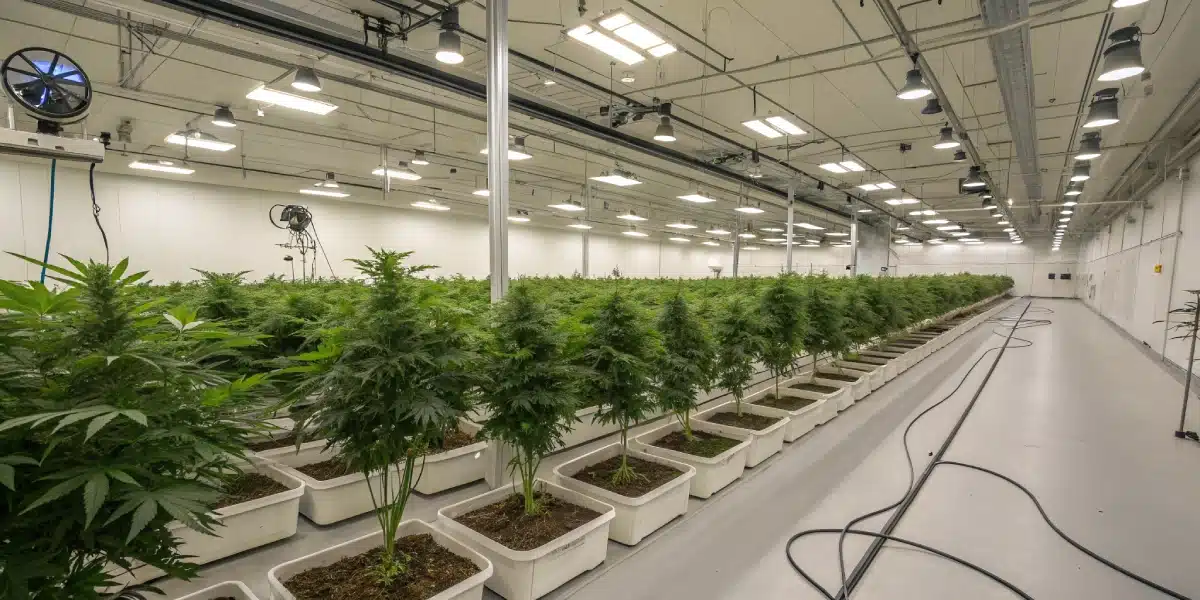
FAQs for Blueberry Autoflower Strain
What are the ideal growing conditions for Blueberry Autoflower Strain?
Blueberry Autoflower thrives in controlled environments with daytime temperatures ranging from 70°F to 80°F and slightly cooler nights. Maintain humidity around 50-60% and ensure excellent ventilation with full-spectrum LED lighting indoors. Outdoors, select sunny, well-draining soil and avoid extreme weather fluctuations for optimal growth success.
How should I manage nutrients for Blueberry Autoflower Strain?
Begin with a balanced nutrient regimen during vegetative growth, emphasizing higher nitrogen levels. Transition to phosphorus and potassium-rich formulas during flowering. Monitor pH levels between 6.0 and 6.5 and adjust feeding schedules based on plant response to prevent nutrient deficiencies or toxicities for vigorous development.
When is the optimal harvest time for Blueberry Autoflower Strain?
Harvest Blueberry Autoflower when most trichomes shift from clear to milky with occasional amber hues. Use a magnifying tool to assess resin production. Timing is critical; harvesting too early or too late may compromise potency, flavor, quality, and final yield, impacting the experience for growers.
What common challenges might growers face with Blueberry Autoflower Strain?
Common challenges include managing temperature fluctuations, humidity levels, and nutrient imbalances. Overwatering can lead to root rot, while inadequate lighting may stunt growth. Pests and mold issues are potential risks. Regular monitoring, prompt interventions, and maintaining optimal environmental conditions are essential to overcome these obstacles.
What maintenance practices help maximize Blueberry Autoflower performance?
Regular maintenance practices include pruning excess foliage, ensuring adequate ventilation, and monitoring nutrient and watering schedules. Adjust lighting conditions and maintain optimal temperature and humidity levels. Clean growing areas to prevent pest infestations and mold. Consistent observation, timely interventions significantly boost plant vigor and yield.


